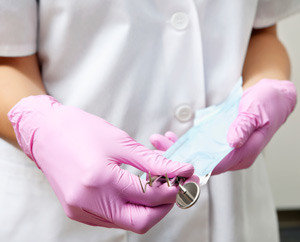By Dr. John Molinari and Peri Nelson
 Q: Our doctors have advised us to cut costs and waste wherever possible, but we don’t want to compromise infection control. One assistant has started to make her own disinfectant wipes. Is this acceptable?
Q: Our doctors have advised us to cut costs and waste wherever possible, but we don’t want to compromise infection control. One assistant has started to make her own disinfectant wipes. Is this acceptable?
A: Manufacturers do not recommend making your own disinfectant wipes by using disinfectant liquids in conjunction with “homemade” wipe materials, such as cotton gauze. Manufacturers of disinfectant wipes are required to use specific substrate materials in the preparation of their final products. Many people do not realize gauze that is commonly used for other purposes often has been previously treated with chemicals, including sodium hypochlorite, during processing. Can there be a possible reaction between residual chemicals in the gauze fibers with the commercial disinfectant liquid? It’s possible, and since the manufacturers require EPA review and accept claims for their disinfectant wipes, they cannot recommend deviation from how the product was approved by that agency.
Q: We recently had a patient in our office who indicated they had hepatitis C when completing their patient history form. Our staff wants to know what they should be doing for reprocessing that patient’s instruments after treatment. Should we keep them separate from other instruments, isolate those instruments in the ultrasonic, and/or autoclave them longer? We follow standard precautions in the practice but some people are confused.
A: If you are practicing standard precautions then you treat all patients as if they are infected with hepatitis B virus (HBV), hepatitis C virus (HCV), or human immunodeficiency virus (HIV). There is a useful phrase which can be applied here: “you don’t know whom or what you are treating.” That patient told you they have hepatitis C. What about the ones who don’t know or do not disclose? The infection control practices and procedures included in standard precautions are designed to protect both healthcare personnel and patients from pathogens that can be spread by blood or any other body fluid, excretion, or secretion. These routinely-used precautions have been shown to be effective in both medical and dental care settings.

